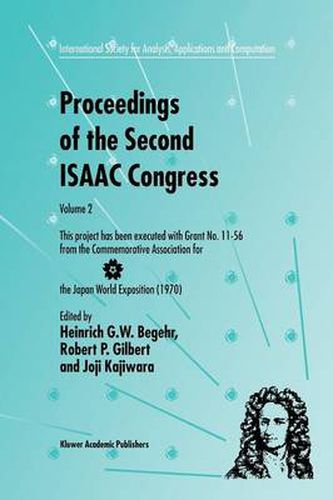Readings Newsletter
Become a Readings Member to make your shopping experience even easier.
Sign in or sign up for free!
You’re not far away from qualifying for FREE standard shipping within Australia
You’ve qualified for FREE standard shipping within Australia
The cart is loading…






This title is printed to order. This book may have been self-published. If so, we cannot guarantee the quality of the content. In the main most books will have gone through the editing process however some may not. We therefore suggest that you be aware of this before ordering this book. If in doubt check either the author or publisher’s details as we are unable to accept any returns unless they are faulty. Please contact us if you have any questions.
Let 8 be a Riemann surface of analytically finite type (9, n) with 29 - 2+n> O. Take two pointsP1, P2 E 8, and set 8 ,1>2= 8 \ {P1’ P2}. Let PI Homeo+(8;P1,P2) be the group of all orientation preserving homeomor- phismsw: 8 -+ 8 fixingP1, P2 and isotopic to the identity on 8. Denote byHomeot(8;Pb P2) the set of all elements ofHomeo+(8;P1, P2) iso- topic to the identity on 8 ,P2’ ThenHomeot(8;P1,P2) is a normal sub- pl group ofHomeo+(8;P1,P2). We setIsot(8;P1,P2) =Homeo+(8;P1,P2)/ Homeot(8;p1, P2). The purpose of this note is to announce a result on the Nielsen- Thurston-Bers type classification of an element [w] ofIsot+(8;P1,P2). We give a necessary and sufficient condition for thetypeto be hyperbolic. The condition is described in terms of properties of the pure braid [b] w induced by [w]. Proofs will appear elsewhere. The problem considered in this note and the form ofthe solution are suggested by Kra’s beautiful theorem in [6], where he treats self-maps of Riemann surfaces with one specified point. 2 TheclassificationduetoBers Let us recall the classification of elements of the mapping class group due to Bers (see Bers [1]). LetT® be the Teichmiiller space of a Riemann surfaceR, andMod® be the Teichmtiller modular group of R. Note that an orientation preserving homeomorphism w: R -+ R induces canonically an element (w) EMod®. Denote by&.r®(*,.) the Teichmiiller distance onT®. For an elementXEMod®, we define a(x)= inf &.r®(r,x®).
$9.00 standard shipping within Australia
FREE standard shipping within Australia for orders over $100.00
Express & International shipping calculated at checkout
This title is printed to order. This book may have been self-published. If so, we cannot guarantee the quality of the content. In the main most books will have gone through the editing process however some may not. We therefore suggest that you be aware of this before ordering this book. If in doubt check either the author or publisher’s details as we are unable to accept any returns unless they are faulty. Please contact us if you have any questions.
Let 8 be a Riemann surface of analytically finite type (9, n) with 29 - 2+n> O. Take two pointsP1, P2 E 8, and set 8 ,1>2= 8 \ {P1’ P2}. Let PI Homeo+(8;P1,P2) be the group of all orientation preserving homeomor- phismsw: 8 -+ 8 fixingP1, P2 and isotopic to the identity on 8. Denote byHomeot(8;Pb P2) the set of all elements ofHomeo+(8;P1, P2) iso- topic to the identity on 8 ,P2’ ThenHomeot(8;P1,P2) is a normal sub- pl group ofHomeo+(8;P1,P2). We setIsot(8;P1,P2) =Homeo+(8;P1,P2)/ Homeot(8;p1, P2). The purpose of this note is to announce a result on the Nielsen- Thurston-Bers type classification of an element [w] ofIsot+(8;P1,P2). We give a necessary and sufficient condition for thetypeto be hyperbolic. The condition is described in terms of properties of the pure braid [b] w induced by [w]. Proofs will appear elsewhere. The problem considered in this note and the form ofthe solution are suggested by Kra’s beautiful theorem in [6], where he treats self-maps of Riemann surfaces with one specified point. 2 TheclassificationduetoBers Let us recall the classification of elements of the mapping class group due to Bers (see Bers [1]). LetT® be the Teichmiiller space of a Riemann surfaceR, andMod® be the Teichmtiller modular group of R. Note that an orientation preserving homeomorphism w: R -+ R induces canonically an element (w) EMod®. Denote by&.r®(*,.) the Teichmiiller distance onT®. For an elementXEMod®, we define a(x)= inf &.r®(r,x®).